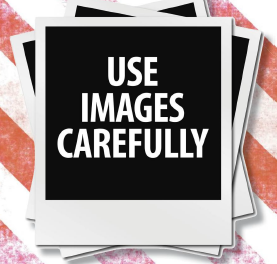It is a must for every small business to have an email list or newsletter. Email marketing is still one of the most effective ways to increase brand awareness and engage with your customers. However, it is not enough simply to have an email list and send out an occasional message. In order to take full advantage of the power of email marketing, you need to find ways to engage the people on your list. You need to keep them interested in you and your product or service if you want to convert them into paying customers.
Fortunately, there are plenty of easy ways to do that. Here are five foolproof ideas to try.
The first thing you can do to increase subscriber engagement is to forget about trying to sell them anything – for the most part. What do I mean by that? The fact is that very few people subscribe to a list in the hopes of being subjected to a series of hardcore sales pitches. They subscribe because they want to be informed and entertained.
Think of the way you feel when you walk into a store. Do you want a salesperson who immediately pounces on you and starts trying to convince you to buy everything in sight? Or would you prefer a low- key approach from a salesperson who might give you some information, but on the whole, lets you look around the store and come to them when you’re ready to buy? If you’re like most people, you would greatly prefer the latter experience – and so would the people who subscribe to your list.
With that in mind, keep your focus on providing value to your subscribers. Share some insights about your industry, provide them with helpful hints or tools to solve a problem they have, or make a short video demonstrating some innovative ways to use your product. It’s perfectly acceptable to include a call to action at the end, but the bulk of your message should be focused on your customer – not on you.
Draw Them in with Your Subject Line
One mistake a lot of companies make is not giving any thought to the subject line they use for their email list. The words you choose are important. You want to make it clear that your email is a newsletter if it is one, or give some indication of what readers can expect to find when they open it. Research shows that vague subject lines do not get the same open rates as specific ones, so you need to be clear.
Another thing to keep in mind is the length of your subject line. One study showed that short subject lines had the highest open rate. Your best bet is to use a short declarative sentence or a provocative question to entice people to open your email. Aim for no more than 50 characters for your subject line, including spaces – 30 characters if your primary target is mobile customers.
The final thing to remember about subject lines is that your subject line must be an accurate reflection of what readers will find in your email. Stay away from so-called clickbait headlines – your subscribers will not thank you if you promise something in your subject line and then fail to deliver on it in the email itself.
What do your emails look like? Are they big blocks of impenetrable text, or are you doing what you can to make them easy to read? One of the best ways to make your newsletter readable is to use a few compelling images to break up the text. A good guideline to use is to have 70% text and 30% images. That ratio will ensure that your email will make it through most spam filters.
If you do use images, make sure that they are relevant to your content. They should be large enough for people to see clearly, but not so large that they make the email difficult to open or slow to load. Internet users are notoriously impatient and if the images take a long time to appear they may just delete your email instead of reading it.
Finally, don’t forget to use your alt image tags to good effect. If your pictures are a manageable size then the majority of your subscribers should be able to see them. However, the alt image tag will describe what is in the picture in the event that the pictures don’t load properly.
Use Smart Design Elements
The design of your email can be just as important as the content. Don’t expect that a plain text email with no formatting is going to draw people in. Instead, make sure to do the following:
- Put your company logo at the top right of the email. That way, people who open your email will know immediately who it came from.
- Make sure that the colors in your email reflect your branding. People tend to notice and respond to colors. If your website is in shades of blue and green, then use the same colors in your email.
- The width of your email should be no more than 650 pixels. If you decide to go with a two- column layout, make sure that your sidebar is on the right.
- Use a readable sans serif font. Sometimes marketers are tempted to use fancy fonts. However, keep in mind that your primary concern should be readability.
If you keep these four design tips in mind, you’ll have a highly readable and compelling newsletter.
Finally, do what you can to segment your list so that the people who receive each email are those who have a genuine interest in its contents. Some companies have multiple newsletters – for example, an apparel store might send out separate newsletters for women’s and men’s clothing, or for accessories.
You can offer people the opportunity to opt-in to email for particular topics when they first sign up for your list. Alternatively, you might send them a welcome email that gives them the option to do it. Either way, you will increase engagement and your email open rate when you give subscribers some choice in terms of what they see from you.
Having an email list is important, but the key to using it successfully is to find ways to actively engage your readers. As long as you stay away from overt sales pitches and give me them an email that’s relevant, easy to read, and compelling to look at it, you will be able to keep your customers interested.



